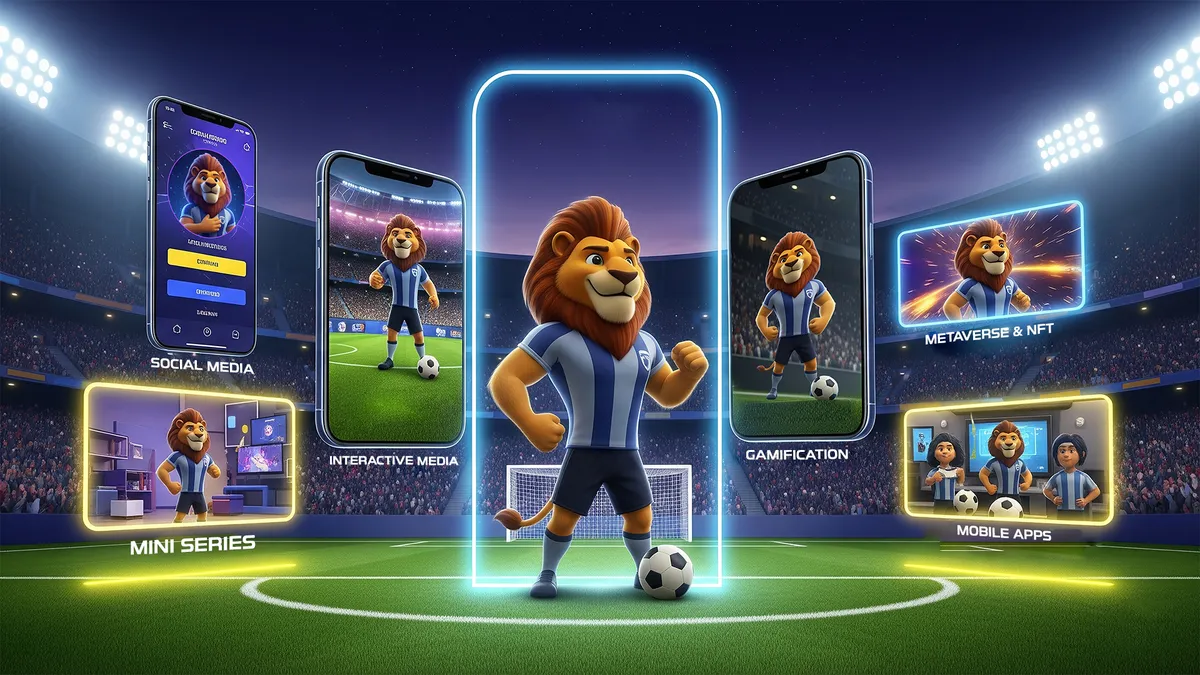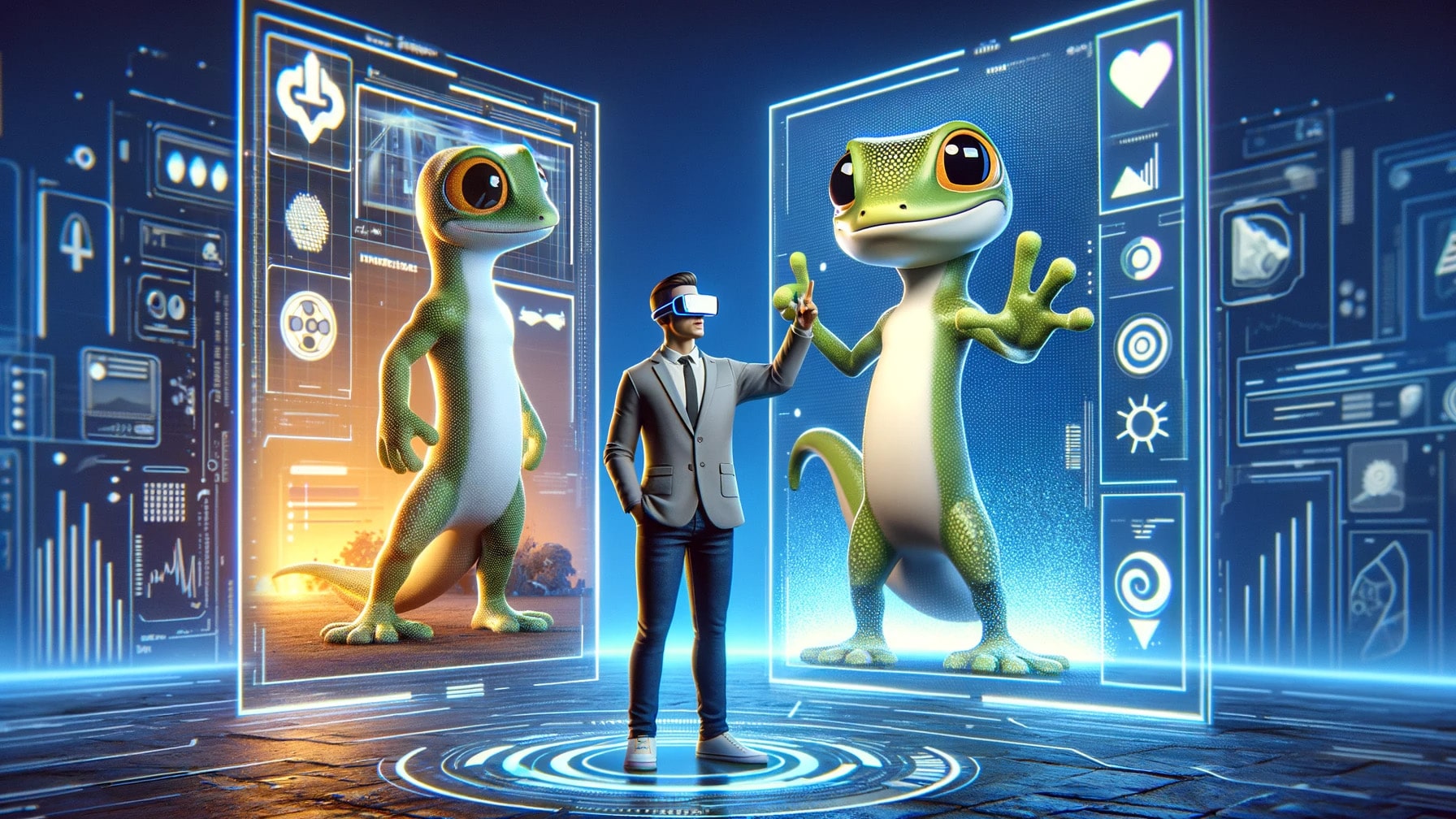
- Introduction to AR and VR in Marketing
- Evolution of Brand Mascots in the Digital Age
- Enhancing User Engagement with AR and VR Mascot Experiences
- Case Studies: Successful Implementation of AR and VR for Brand Mascots
- The Future of AR and VR in Brand Mascot Marketing
- Practical Considerations for Implementing AR and VR Strategies
- Conclusion
While marketing trends are always changing, some tools are timeless. A prime example is the brand mascot, and to appreciate its enduring power, it’s essential to first understand what brand mascots are. These memorable characters have always been a fruitful way for businesses to connect with their audience.
Whether it’s the classic Mr.Clean or the lovable GEICO Gecko, mascots have always represented the identity of a brand. Now, we’re about to see the power of using Augmented Reality (AR) and Virtual Reality (VR) for such mascots.
First, let’s talk about the role of AR and VR in marketing.

Introduction to AR and VR in Marketing
These days, technology has a key part in creating immersive and fascinating branding tactics that engage with people on a deeper level than traditional methods. Augmented and virtual reality (AR/VR) are two technological combos that have changed the face of marketing.
Immersion & Engagement
AR and VR in marketing tactics may greatly enhance consumer engagement and immersion. A virtual reality experience is one way that businesses may immerse consumers in what they sell. They can also create:
- A three-dimensional representation of the object or an animated simulation of its features, giving buyers a closer look at the item before buying it.
- VR fitting rooms where customers may see and feel products virtually before buying them.
- Fun, engaging, and interactive games and activities that gently promote the brand message while entertaining and engaging consumers.
Interactive Marketing
AR and VR may do more than just immerse users; they can also empower companies to engage consumers via interactive experiences. Brands may use AR to develop interactive games that consumers can play to get to know the company better. Brands may use this to strengthen their relationships with consumers and win their loyalty. Plus, they can also:
- Set up 360 VR/AR tours to give clients the opportunity to virtually visit the store from the comfort of their own homes.
- Provide learning opportunities that use interactive simulations to simplify otherwise daunting topics.
Personalization
Brands can improve their segmentation efforts and provide consumers with more tailored experiences by using AR and VR. Take virtual reality as an example; marketers may design user-specific experiences based on their interests and preferences. Particularly when aiming for particular demographics, like tech-savvy millennials, this strategy can really pay off.
Evolution of Brand Mascots in the Digital Age
Mascots have come a long way from 1916 when Planters introduced the world-famous Mr. Peanut as their mascot. Back then, these mascots were more icons than characters because you could only see a picture in print or TV ads.
But, entering the digital age, the inanimate mascots turned into interactive characters with unique postures. These were mascots like the GEICO Gecko that became a big hit on social media.
Now, VR brand mascots are opening up new avenues of creativity in marketing by revolutionizing the concept of authenticity. They embody a certain kind of genuineness that is in sync with the modern digital era and the changing demands of customers.
These mascots take personalization to an unseen level. The purpose of creating these digital entities is to meet the needs and satisfy the tastes of certain demographics. By catering to each customer’s particular interests and fostering meaningful relationships, people can feel closer than ever to their favorite brands.
If you’re thinking about adding a mascot to your communication plan, our team is here to help.
With over 10 years of experience and the development of more than 2,500 characters, we’ll guide you through every step to unlock the full potential of your new team member!
Learn more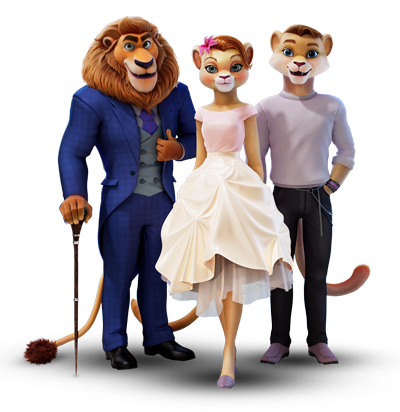
Enhancing User Engagement with AR and VR Mascot Experiences
Using sophisticated technologies, a VR/AR brand mascot can become a virtual in-house brand representative. This not only gives birth to a unique, intelligent persona that personifies the brand’s message and identity, but it also boosts user engagement in different ways. These mascots bring customers closer to brands because with them:
Users Are Always in Touch With the Brand
Remember that an AR mascot is more than just a picture; they are the very embodiment of the organization’s personality and tone. This speeds up interactions, which in turn makes audience engagements fun, simple, and responsive. In other words, you have a personal brand representative that’s available to answer any of your questions and even connect you with a specific department, and it’s also your favorite mascot!
Brands Tell an Immersive Story
Because mascots are virtual and not limited by space or time, there are a lot of possibilities for brand storytelling with them. Imagine this: In the morning, You can have your mascot in Times Square and in the evening, have it show up in a sports game.
This extraordinary capacity to be “everywhere” elevates a brand’s narrative to a whole new level of magic and mystery. Curiosity is always high among the audience. It doesn’t matter if they’re not interested in playing; you have their attention. Consumers have a stronger emotional connection to the brand when they begin to wonder when and where the mascot will make an appearance.
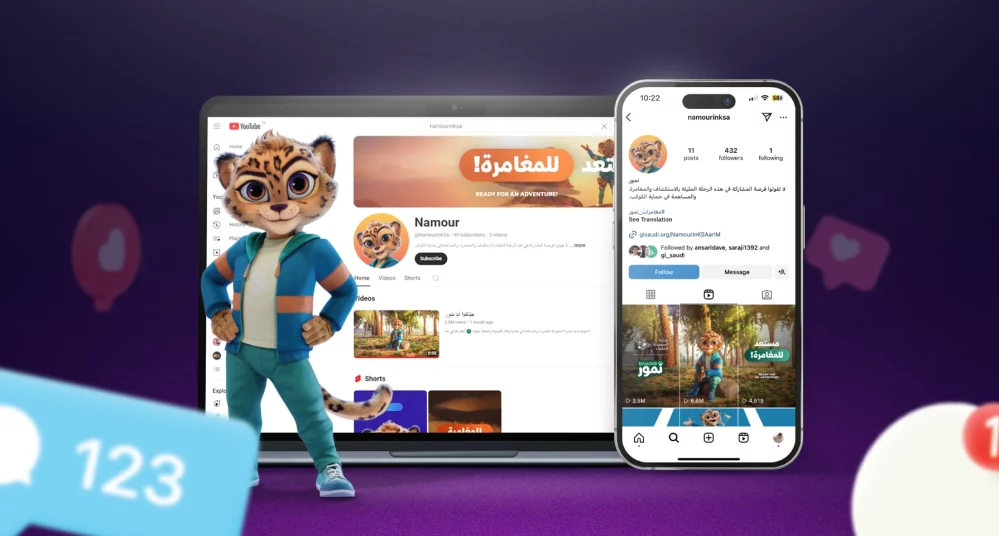
Brands Include All Demographics
One thing that makes these mascots different from humans is flexibility. Their storylines are very adaptable, allowing them to captivate a diverse range of fans. If you’re open to interacting with others, you may simply add side characters. Including children, parents, and other family members in the mix opens up additional opportunities to connect with people of all ages, genders, and races, making everyone feel more connected to your brand’s story.
If the mascot is a girl, for instance, you may reach a wider audience by introducing her to a male companion, such as a sibling or perhaps a partner. Similarly, to include animal lovers and pet owners, you can come up with a pet VR/AR mascot that can interact with users at any time!
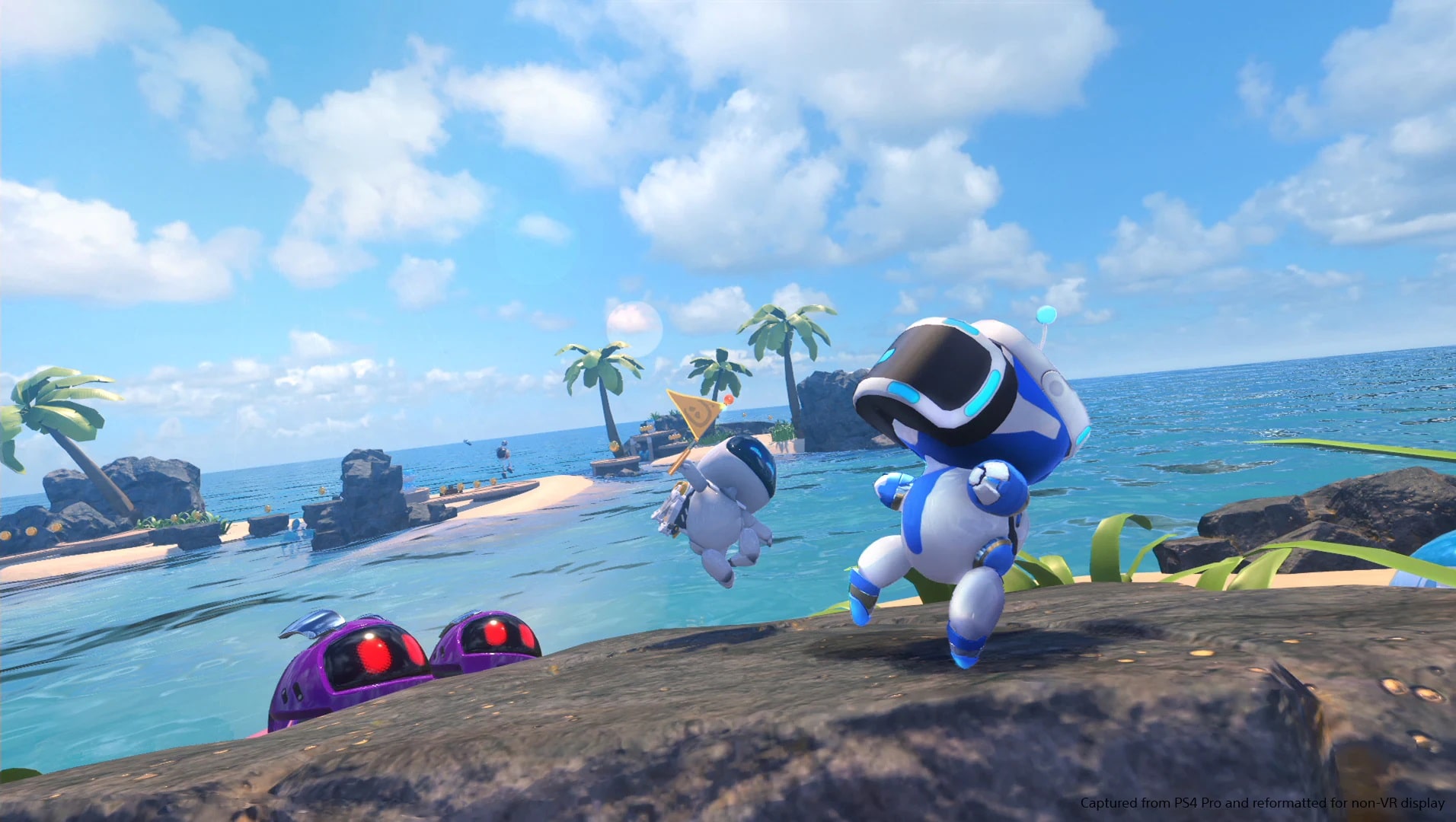
Case Studies: Successful Implementation of AR and VR for Brand Mascots
While most markets are still testing the waters with AR/VR technology in marketing, there are already some VR mascots out there that have captured the headlines. Here are three notable examples:
PlayStation’s Astro Bot
Debuting in The Playroom VR (2016), the Astro Bot became a giant hit among PS lovers with his cheerful character and energized movements. In fact, this character became so popular that he earned his own game named Astro’s Playroom in 2020.
Astro Bot’s charming appearance makes it stand out. The little and stocky bot has a light blue and white color scheme. The Bots stand out because of their unique personality, noise, and overall look. Every bot has its own unique language and creates a high-pitched scream when triggered by the gamer. In fact, it’s very endearing and never becomes irritating.
Carolina Panthers’ Mixed-Reality Beast
Back in 2021, the Carolina Panthers made the headlines by making their giant panther mascot come to life in the Bank of America Stadium. There was a viral video online showing the iconic panther entering the stadium, tearing the opponent team’s flag into bits and pieces, and then leaving the transfixed fans with a terrifying roar. It was such a ridiculous thing that it got millions of views on Twitter, making the Carolina Panthers a name to remember for all NFL fans.
MIT’s Tim the Beaver
Just a few months ago, MIT announced that one of its bright minds has created a mobile app which brings the Famous Tim the Beaver to life. Thanks to this AR/VR technology, anyone around the world only needs a smartphone camera and browser to interact with this mascot anywhere, anytime.
Plus, they can even customize the mascot’s size, gestures, and movements. They can take a photo with Tim at any location, capture him dancing, or posing for a photo. Of course, MIT believes that this is just the beginning.
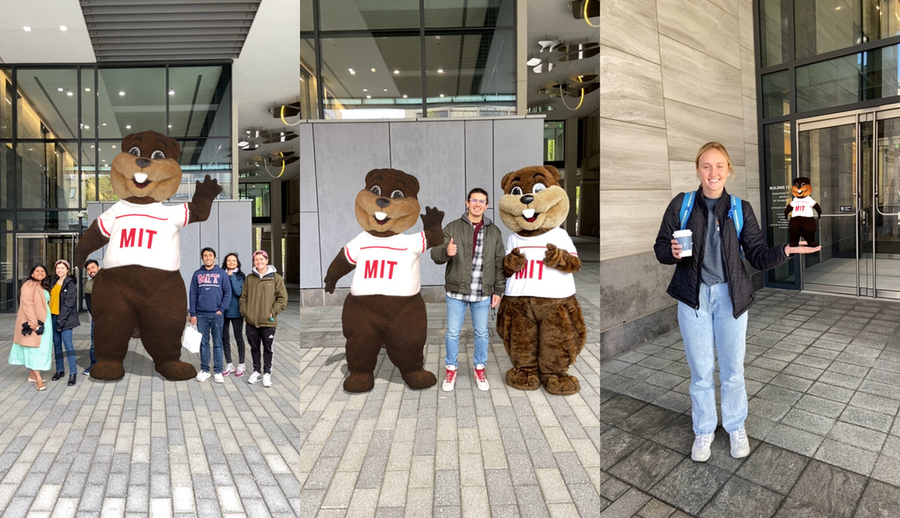
The Future of AR and VR in Brand Mascot Marketing
Imagine this: As you go through the aisles, a VR mascot comes over and gives you suggestions for products that would be perfect for you. On the other hand, imagine you’re at a virtual reality event where your favorite mascot is among the audience. It’s exciting, but it can be even more thrilling with some breakthroughs in the near future:
Using Haptics for Ultimate Engagement
This is a thrilling development in the field of AR and VR. By bringing a sense of touch into the experience, we can break down one of the few final barriers between reality and virtual worlds.
Gloves and vests that provide sensory input allow us to experience virtual environments in ways that were previously unimaginable. Feeling the sun’s rays or the chilling cold of the winter in a virtual environment would be an incredible experience. Now, imagine the level of user engagement if you could actually touch the brand’s mascot, making the relationship more personal and real than ever.
Hyper-Personalization
VR & AR can offer even more in terms of personalization. Customers take an active role in shaping the story of a business; they are no longer just observers. They have the option to alter the color of the products and try out clothes virtually.
Now, imagine what would happen if they could change some aspects (clothes, hairstyle, voice, etc.) of the brand mascot to make it more “familiar and personal”. It can give customer relationships a whole new meaning.
Crossover with Influencer Marketing
Since social media came on stage, influencer marketing has turned into a powerful marketing strategy. Of course, this always comes with certain challenges like the influencer’s personality, reliability, authority, and many other elements that sometimes make this arrangement too much of a hassle.
But, what if you could have your own influencer? Not a real person, but a virtual one. In fact, virtual influencers are already a thing, so why not use this tool to make the brand’s very own mascot a powerful influencer that’s always under your control? This would save any business a lot of money, time, and trouble.
For a related read, check out: What Is Virtual Influencers? + How To Make
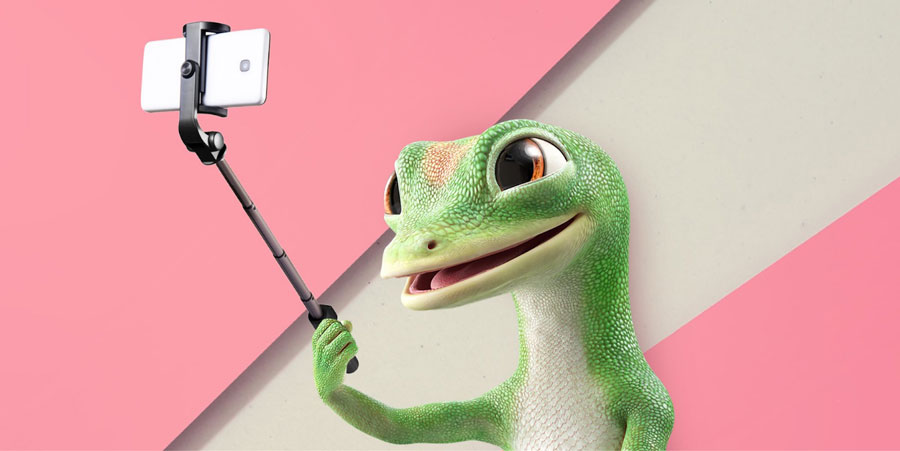
Practical Considerations for Implementing AR and VR Strategies
Just like designing any mascot, the job of a VR/AR mascot is simple: To represent your brand’s identity, get your message across, and help you turn curious users into passionate customers.
To do that, you need to consider several general pointers:
Find the Right Mix of Style & Detail
Numerous elements, including your audience and brand identity, will determine the mascot’s style and level of detail. It all comes down to the impact you’re going for and the tools at your disposal; from realistic to abstract, the choice is yours.
For example, with Astro Bot, style is a more important factor because it should be in line with the overall feel of PlayStation. On the other hand, the Carolina Panthers’ mascot won’t have any impact if it’s not realistic, so it should be as detailed as possible.
Make it a Living Character, Not Just a Pretty Cartoon
If you want people to respond to a mascot, you need to make it responsive. If you want your VR mascot to seem more real and personal, you need to integrate features like eye contact and gaze behavior. This can make people feel like they’re interacting with a real, living being, allowing them to form meaningful bonds with the mascot.
If you’ve had any experience with the character Quill in the game Moss, you’ll know how an interactive design can create a sense of deep intimacy with a character. Another prime example is the female-centric VR story, Dear Angelica, where you’ll witness an unbreakable bond between a mother and a daughter.
Test & Optimize
There’ll be hiccups along the way, which is why you need to test the mascot for performance, realism, style, and attractiveness. This is no surprise, especially since AR and VR mascots are still pretty new and you need to go through some trial and error before finding the right mix.
After testing the mascot and getting some insights, the last thing to do is optimize your character so that it puts less pressure on the VR’s experience and quality. Complicated textures and intricate motions may make virtual characters resource-intensive. You can work on the level of textures and details to make things simpler.
Conclusion
So, there you have it. This is a small glimpse into the future of brand mascots with AR/VR technologies. If you don’t have any experience with this technology and plan to join this trend, you should, then you should consider partnering with a professional animation studio that can create an AR/VR mascot to fit your brand’s identity.
Luckily, we at Dream Farm Agency have a cutting-edge animation studio along with industry-leading experts who can make your mascot into a memorable icon. You just need to get in touch and give us the idea in your head!

Rojan


